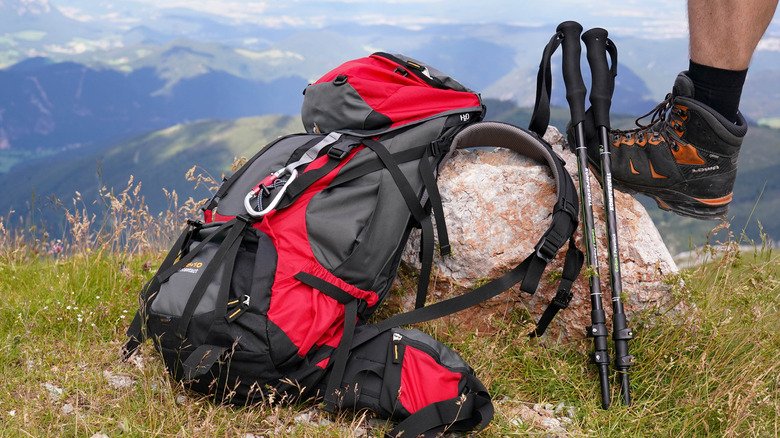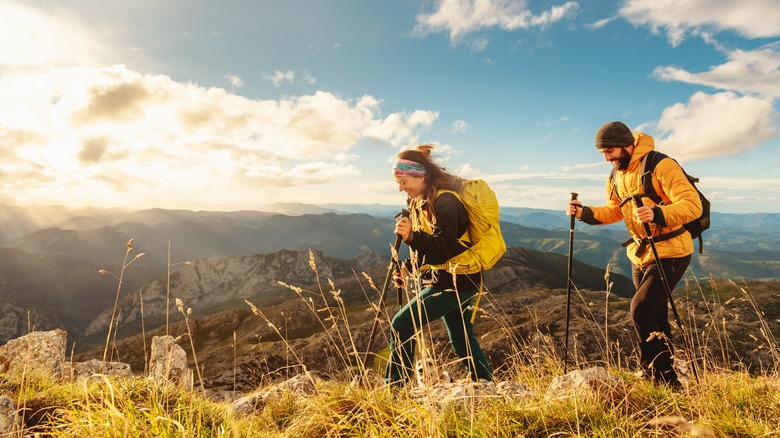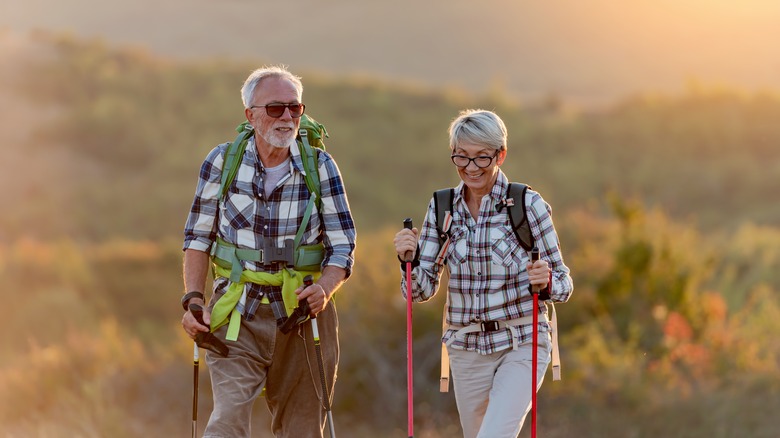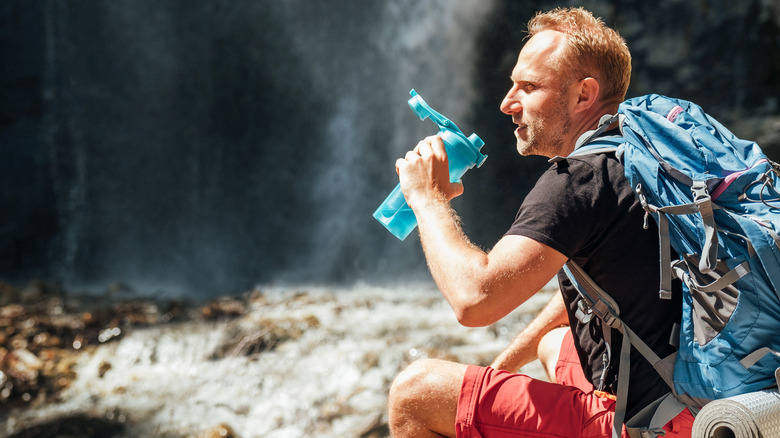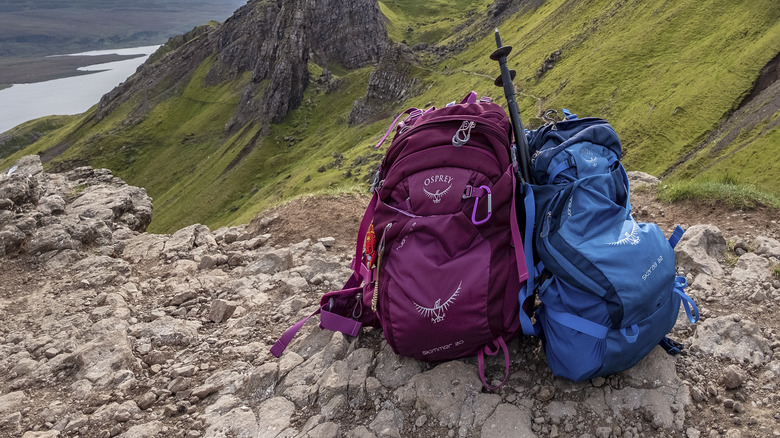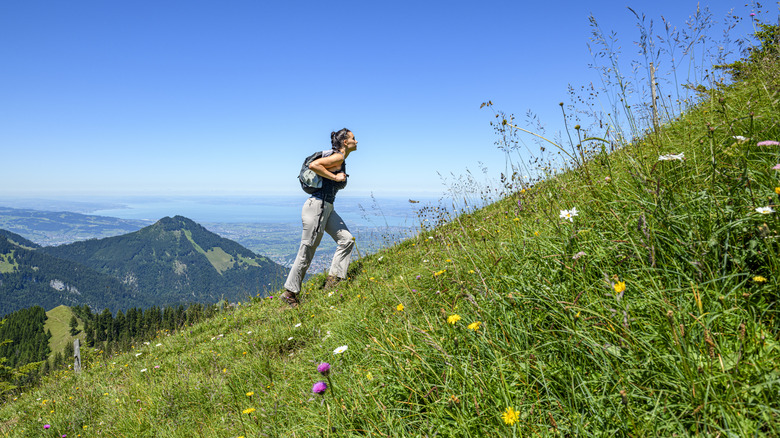How To Choose The Right Backpack For Your Hike
Just like with hiking shoes, choosing the right backpack is an important step in preparing for a trip out into the wilderness. This is because a good backpack is like an ally that helps you carry all your gear and enhances your hike in multiple ways — while the wrong backpack can be inconvenient, distracting, uncomfortable, and even painful. Nothing is worse than getting a few hours into a hike only for your shoulders and back to start aching and realize that what you previously hoped would be a fun trip was about to be a long and uncomfortable journey. So, how do you make sure a backpack is right for you?
As it turns out, choosing the right backpack comes down to a few factors which can vary depending on the specific hike and its length as well as your goals for the trip. If you typically go on hikes that are around the same length and difficulty, then you may only need one backpack. However, if you are an avid hiker who tends to vary the length and intensity of trips, you may need to invest in multiple backpacks to fit the requirements of different trails. If you are in the market for a new backpack, here are some things to consider before buying to ensure you get the pack that's best for you.
Determine the size you need
When choosing a backpack, the first thing to consider is its size. Backpack sizes are typically measured in liters which helps describe the amount of space inside the pack and, therefore, the amount of gear it can hold. For a quick one to two-hour hike, most people only need packs that are around 10 to 25 liters. This is enough space to hold basic gear and some extra clothing as well as snacks, a first aid kit, water, and maybe a few extra things. However, if you are hiking in the winter and need to bring heavy coats (or are hiking with kids and carrying their gear in your pack), you may need something bigger. REI notes that packs around 21 to 35 liters are what most people find to be the best all-around day hiking size.
For longer treks that last around two to three days, you will likely need a pack that is around 35 to 50 liters because it will be large enough to carry essentials like clothes, food, sleeping bags, lightweight tents, cooking equipment, and other gear. Thru-hiking backpacks for treks longer than three days are typically over 50 liters with the largest packs being around 105 liters. However, most thru-hikers tend to carry packs that are 70 liters or less so that their bags aren't too heavy or awkward to hike with.
Make sure your pack fits correctly
Once you decide how big of a backpack your trip requires, you will need to try the pack on and make sure it fits correctly. Correct backpack fitting is very important and can be the difference between an enjoyable trek and a painful one. In general, a backpack fits you well if the hip straps fall at the top of your hip bones and the point where the shoulder straps connect to your pack is located at your shoulder blades (or around one to two inches below the top of your shoulder). If a backpack does not fit you correctly despite how much you adjust it, you probably need a different size.
For backpack sizing, the most important number you need to know is the length of your torso. This is often measured straight down your spine from the top of your back (specifically from the C7 vertebrae) to the top of your hip bones. Although backpack sizing varies depending on the brand, in general, a small-sized backpack would fit a torso length of 16 to 19 inches, a medium should fit a torso length of 18 to 21 inches, and a large would fit a torso that is between 20 and 23 inches.
Compare your preferred features
Once you have narrowed your choices down to a few backpacks that are the right fit and size, it's time to start looking at the different available features. Hiking backpacks come with plenty of different features, some of which may be important to you and others that may not matter to you at all. For example, if you are a hiker who likes to move quickly and keep your hands free while walking, you may want a backpack that comes with a water bladder to make staying hydrated more convenient. However, hydration bladders do require some cleaning and care, and some hikers may prefer just to have a water bottle that can be thrown in the dishwasher after each trek.
Other important features that you should consider include whether or not the backpack comes with a rain cover, pockets on the hip belt, multiple compartments, a sleeping bag storage area, and adjustable straps. If you will be bringing a full pack with you on your adventure, you may also want to consider how accessible your gear will be. While a standard backpack opens from the top, many hiking backpacks also have options for side and bottom zippers that will make it easier to reach all your gear while on the trail.
Decide on quality or budget
Now that you know what you want in a backpack, you can decide if you want to invest in a more expensive brand or go for a budget option — and both choices have their advantages. Many high-quality backpack brands like Osprey, REI, Patagonia, and Black Diamond make their products from long-lasting materials and come with a warranty. Some brands like Osprey and Patagonia even offer lifetime repair options. This means they are a great choice if you know this is a backpack you will use a lot for a long time.
On the other hand, budget backpacks are often made of lower-quality materials and are more likely to tear or rip during an outing. On top of this, cheaper backpacks tend to be more uncomfortable because they have less padding in the straps and may even have a frame that is not designed to be as ergonomically correct as it should be. However, if you are buying a backpack for a one-off trip and you aren't sure you will use it much in the future, it may be smarter to go with a cheaper backpack and invest that money saved in gear you'll use more often. Plus, if you go for the budget backpack now, you can always invest in a higher-quality pack later once you are sure that a certain size and type of backpack is worth it for you.
Should you go for standard or ultralight?
Ultralight everything has exploded in the outdoor gear world in recent years due to the increasing popularity of speed-based activities like trail running and fastpacking. If speed factors into your hiking goals, you may want to consider purchasing an ultralight backpack. However, it is important to know that ultralight packs, although they can help bring down your pack's overall weight, do come with disadvantages.
To decrease the weight of the bag and make it "ultralight," many traditional features are removed, including the frame, which is responsible for comfortably distributing the pack's weight. Without the frame, ultralight bags are much more uncomfortable than standard bags when carrying heavier gear. Therefore, ultralight bags are best for hikers who are already good at packing light and regularly do so. According to Outdoor Gear Lab, hikers with a base weight (the weight of everything not including food and water) of more than 20 to 30 pounds should use a traditional pack because most ultralight backpacks perform best with a base weight of around 10 to 15 pounds.
